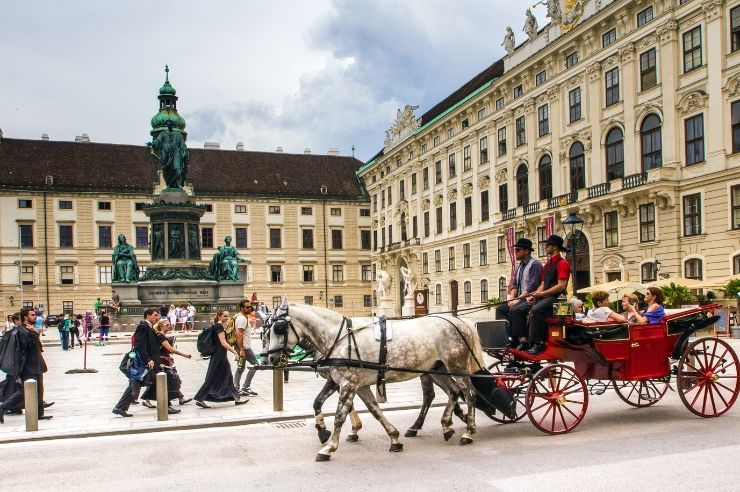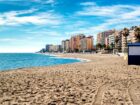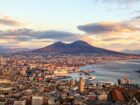Have the opportunity to visit either Vienna or Zurich for 2-3-4 days and torn between the two? Both are stunning cities, two of the most beautiful cities in Europe.
Both have a rich cultural heritage, world-class art museums, renowned music and opera, breathtaking natural beauty, and unique culinary experiences.
So which of Vienna or Zurich should you choose?
Vienna is grand, elegant and formal, with imperial palaces, world-class museums and renowned classical music venues. Zurich is an impressive and wealthy financial hub, with a gorgeous old town and riverfront, great museums and luxury shops, and surrounded with breathtaking mountains and lakes.
Vienna is the capital of Austria, a relatively big city by European standards with a population of about 1.7M, sitting at the Eastern end of Austria, near the Slovakia border. Zurich has a population of 400K with a business city feel but is nonetheless also beautiful with a stunning medieval old town crossed by a gorgeous lake.
Let’s look at what travelers typically say when comparing the two cities for a short stay.
Table of Contents
What travelers say
- Vienna is magnificent and grandiose. It can be perceived as a bit pompous with its splendid imperial palaces, museums, and wide boulevards – to some degree it can feel a bit like Paris.
- Travelers often recommend at least 4 nights to see Vienna as its very spread out. However, the inner city ring (Ringstrasse) has the main sights and can be visited in a relatively short time, on foot or taking buses and trams.
- Vienna has majestic cafés and restaurants full of history. It’s beautiful and elegant, and can be compared to London with its monuments and galleries.
- Vienna has many world-class museums, art galleries, and palaces concentrated in a small area. You could visit a different museum every day for a month and still not see everything.
- As the former capital of the Austro-Hungarian empire, Vienna has a plethora of superb architecture, including Gothic cathedrals, royal palaces and castles. It has a unique importance in the musical world.
- Vienna was largely reconstructed, though many of the historic buildings were restored faithfully. Vienna is very well-organized and maintained. The historic center is sometimes described as a bit too pristine.
- Zurich is the financial hub of Switzerland, has a very nice old town, a beautiful lakefront area, the country’s most vibrant nightlife, and an international and multicultural vibe.
- Zurich isn’t really a tourist city. Luzern however is one hour away by train and is a beautiful area with a lake and mountain setting.
- Zurich is very international and is considered the world’s most expensive city.
Getting around
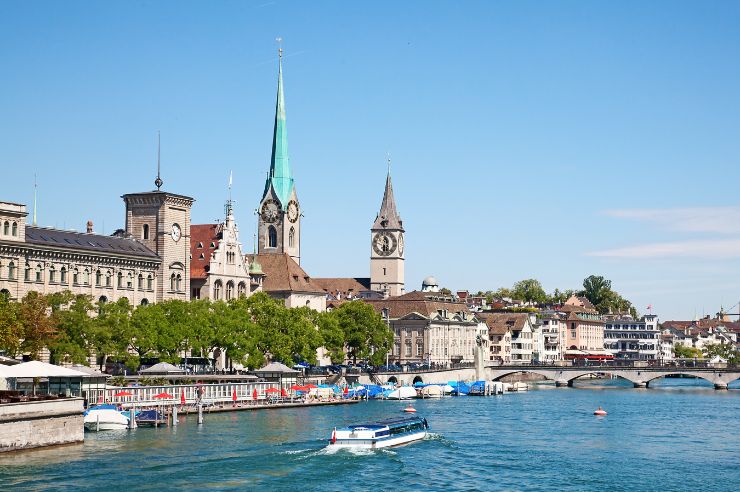
Vienna is about equidistant from Budapest, Prague, and Munich, and well-connected by international airlines.
The Vienna airport is under 20 km from the city center and is easily accessible by public bus, airport express bus, taxi, or train.
Vienna has a very efficient subway and tram system for getting around the city. The Vienna TravelCard allows you to save compared to individual fares.
In Switzerland in general, you can easily travel everywhere by train or car and get anywhere in a few hours max. The Swiss public transit system takes you anywhere with scenic rides – the Swiss Pass is a good option for saving money on transport.
From Zurich, it’s easy to travel to many places in Europe easily (international airport, train, buses, etc). Zurich has direct trains to Lugano (on the way to Milano, Italy), Locarno, Munich, and Paris.
It has also local S-Bahn trains to tourist regions in nearby Germany. It’s also a good base for visiting Basel and the Rhein Falls waterfalls.
Vibe & people
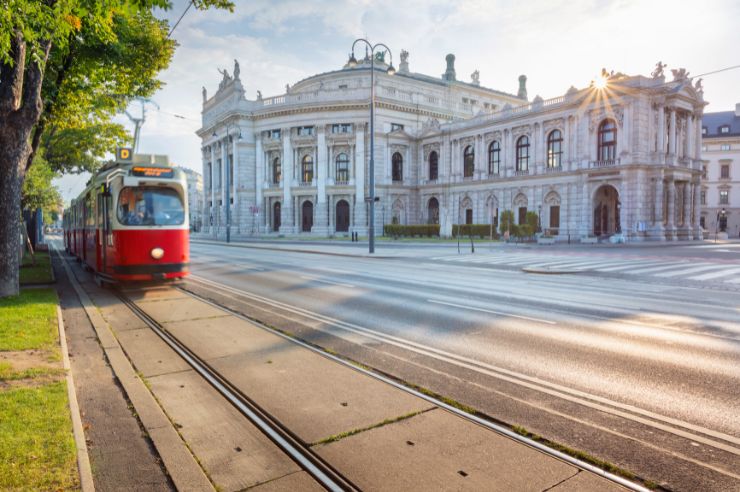
Vienna
Vienna’s inner city is relatively spread out compared to Zurich and doesn’t feel tourist-invaded. Real Austrians live in the heart of the city, 200-year-old shops continue to operate there, and the traditional coffee shops and restaurants cater to the locals as well as the tourists.
Vienna has many grand monuments and avenues, many of them located inside the central Vienna inner circle which is relatively small. The First District is relatively flat and concentrated, and as a result, many of the city sights can be seen in a short time by going around the small area.
For some travelers, Vienna’s carefully-rebuilt city center is just too picture-perfect, stately, and manicured for authenticity. Its homogeneous classical architecture gives it a majestic but somewhat monotonous feel.
Vienna has a nice mix of Imperial past and post-war history, providing a rich experience for visitors. Travelers often find the areas of Vienna outside the center circle not so attractive, even a bit depressing.
Zurich
Zurich is a business and financial center, however it’s a beautiful city with an impressive old town and lakefront.
Zurich has a very laid-back atmosphere, particularly in the summer. It has lake beaches, beautiful parks, excellent museums, restaurants and cafés, and upscale shops.
The city is easy and nice to wander around and navigate. It’s attractive and clean, like all Swiss cities. It has picturesque old cobblestoned streets and beautiful lakeside views.
Although extremely expensive, the famed Bahnhofstrasse avenue is an exciting place to stroll, shop, or window shop, with many luxury boutiques and jewelers as well as international fashion names.
Travelers often find the people in Zurich a bit cold and distant, caught up in the “rat race”. They tend to stick to their relatively closed work and social groups.
Zurich is further from the high Alps than Lucerne, but it also has beautiful nature surrounding it such as the scenic Üetliberg hills right outside the city. Travelers generally find Zurich has Swiss character despite being a bigger city.
Sights & culture
Vienna
In Vienna, the tourist sights are quite stunning and concentrated around the inner ring, a relatively small and walkable area. The main attractions include the imperial palaces from the Austro-Hungarian era, the Gothic cathedral and churches, the museums, and the gardens.
The Schonbrunn Palace, the Hofburg Imperial Palace, which hosts the Sisi Museum, and the Belvedere Palace with its gardens, are prime historical landmarks with great elegant architecture.
The 12th-century Gothic and Romanesque St Stephens Cathedral is Vienna’s most visited monument. Other major architectural attractions include the Parliament Building, City Hall (Rathaus), the University of Vienna, the Neo-Gothic Votiv Church and Museum, the Volks Gardens, and Burg Theater.
Vienna is also great for music concerts, operettas and operas, namely at the majestic Opera House. The city also has magnificent gardens to visit.
Vienna has great museums, many of which are located in the Museums Quarter district. Noteworthy museums include the Belvedere (in the Upper Palace) and the Kunsthistoriches Museum. The latter hosts the impressive Habsburg art collection and is one of the world-class museums.
St Charles Square and Church with the two obelisks in front are very popular tourist sights. The Spanish Riding School inside the Hofburg Palace has exhibits showcasing the world-famous Lipizzaner horses.
Zurich
In Zurich, the picturesque old town with its narrow pre-medieval streets on both sides of the Limmat River is a major attraction.
The attractive riverfront promenade (Limmatquai) runs from the train station past the picturesque 17th-century town hall.
The old cobblestoned Augustinergasse lane is lined with old merchant houses with carved windows.
The Grossmünster 16th-century Romanesque-style protestant cathedral is a major sight, with twin towers offering panoramic views over the lake and the Alps.
The elegant 9th-century Fraumünster Church has a copper-covered spire and modern tinted glass windows by Marc Chagall.
Zurich has world-class museums such as the Kunsthaus art museum, with its impressive Swiss art collections spanning several centuries, and the Swiss National Museum (Landesmuseum, Swiss history) housed in a sumptuous 19th-century building.
The city has a very large number of restaurants and stores. The lakeside area offers ferry rides and boat rentals. Visitors can take the paddle steamer ferry to Rapperswil town and visit the castle and rose gardens.
You can take a little train up the Utlieberg small mountain for great views over the city, lake, and snowcapped mountains, as well as great hiking options.
You can explore the Belvoir and Rietberg parks, or visit the Zurich Zoo via a nice and short tram ride from the center.
Food & nightlife
Vienna
Vienna has a lot to offer in terms of fine restaurants, cafés, and nightlife. The capital is particularly renowned for its elegant historic cafés and coffeehouses.
Demel, for example, is a beautiful 19th-century salon with a pleasant terrace offering reputed cream cakes, scones, and strudels.
Vienna is well-known for its wine from the wine country West (along the Danube)and South/Southeast of the city. Both the red and white wines are great and can be tested in the popular Grinzing Heurigen taverns.
The largest concentration of restaurants and pubs in Vienna is in the First District inside the ring (aka Innere Stadt) – also the priciest.
In Margareten on the edge of the city’s historic center ring, the 16th Naschmarkt Pedestrian Market Street is a good place to hang out and try the dozens of food and vintage stalls and restaurants.
The area known as the “Vienna Bermuda Triangle” around Ruprechtskirche (near the Schwedenplatz) offers some of the best nightlife, though some feel it’s a bit overrated.
You can also find a good mix of bars, pubs, and eateries in the historic Spitterlberg area, e.g. Seven Bar, Bukowski, Café Nil, Centimeter, or Schnitzelwirt.
Districts 7 and 8 are close to the university’s old neighborhood so a lot of student nightlife takes place around there.
The Donaukanal neighborhood is a club hotspot (e.g. Flex. The Prater and Praterster areas have some up-and-coming hangouts such as Fluc Café and Wanne.
Vienna is generally quieter at night and on Sundays, with most places closing very early, including the market and shopping streets.
Zurich
In Zurich, the Niederdof district in the heart of the old town, an easy walk from the Zurich train station, is a very popular nightlife area with medieval streets, pedestrian alleyways and squares, posh shops, fine-dining restaurants, and trendy pubs.
From the popular Niederdorfstrasse avenue, you can walk down to the lake and along the river, and enjoy the city lights at night.
The area has countless indoor and outdoor restaurants and is typically very animated on evenings and weekends.
Langstrasse is another main area in Zurich for late-night bars and nightclubs (best avoided at very late-night hours though).
Shopping
Vienna
In Vienna, the Mariahilfer Strasse is one of Europe’s longest shopping streets with many department stores and trendy fashion shops.
The prestigious Graben and Kohlmarkt streets gather renowned international designer brands and high-end luxury jewelry stores.
Vienna is famous for its traditional Viennese craftsmanship including fine porcelain, jewelry, and textiles.
The Naschmarkt open-air market sells fresh produce, spices, and local delicacies.
Zurich
Shopping In Zurich is generally more expensive than in Vienna. The Bahnhofstrasse avenue stretches all the way from the lake to the train station and is the city’s main shopping avenue with many luxury boutiques, jewelers, and international fashion names.
The old town and the riverfront promenade also have upscale fashion stores. These are very nice areas for walking around, window shopping, taking the tram, dining outside in upscale restaurants (e.g. Terrasse at Baur au Lac), or tasting delicate Swiss confectionary (e.g. Spungli or Laduree Confiseries).
Lodging
Vienna
The Intercontinental is a nice 5-star hotel, though more attractive inside than outside – some travelers feel it needs renovation.
The Ritz, around the corner, is considered to offer better service.
Besides the big 5-star hotels, travelers recommend the Grand Hotel Wien which offers a great location and excellent service, and the Konig Von Ungarn, a pleasant early 20th-century place in a small street behind the cathedral.
Hotel Austria is often mentioned, good breakfast and friendly staff, convenient location for easy access to the inner ring.
The Kaiserin Elisabeth is a boutique hotel with old-style Viennese elegance near Stephansdom.
In the Spitterlberg area, another historic neighborhood with lively nightlife, travelers like the 25hours Hotel, the K&K Maria Theresia, Hotel Altstadt Vienna, and Hotel ViennArt am Museumsquartier.
All are within walking distance of MariahilferStr. Vienna’s main shopping avenue, the city center, the Naschmarkt market, and two subway lines.
Zurich
In Zurich, visitors typically choose to stay near the Bahnhofstrasse or in the old town such as around Zähringerstrasse or Weinbergstrasse.
Travelers highly recommend the Baur Au Lac Hotel, often considered to have some of the best service, bedding, and bathrooms.
Best Western Plus Hotel Zürcherhof is near the train station and within walking distance of places of interest. It offers pleasant rooms, nice and friendly staff, and excellent breakfasts.
Romantik Hotel Florhof is often recommended, an older and smaller property, nicely renovated and located about 4 blocks from the Old Town (for a quieter stay). The hotel is relatively expensive but offers good value.
Gasthof Hirschen in Regensdorf is also a frequent suggestion, though further from the center with some walking and a 17-minute transit ride required.
Day trips
Vienna
In Vienna, you can explore nice neighborhoods outside of the inner ring such as Margareten and Mariahilf, which offer more affordable and varied restaurants.
Day trips from Vienna include exploring the wine villages on the outskirts of the cit such as Grinzing and having a buffet meal and the famous new wine at a heurige. You can take the tram or subway there from the city center and back – they run all day at frequent intervals.
Other day trips from Vienna include Salzburg and Melk (1.5-2 hours from Vienna), both charming small cities. The Melk Abbey is worth a visit. Near Melk, Wachau Valley is a wine-growing area in the Danube countryside with medieval villages to visit, river cruises, and scenic bike paths. Nearby Krems is is a UNESCO world heritage site
Vienna is also only an hour away by train from Bratislava, the capital of Slovakia with its 18th-century pedestrian old town, its animated cafes and bars, and its beautiful castle overlooking the Danube. You can also easily travel from Vienna to Budapest by train, a 2.5 to 3 hours ride.
Zurich
In Zurich, you can easily take a ferry to other towns, rent a boat, or go swimming (summer). You can catch a scenic train ride to Interlaken (about 50 min) and continue into the mountains and to Wengen, Murren, or Grindewald.
Zurich also has easy to access to the Rhine falls or Rapperswil to visit the castle and Rose Gardens.
Other trips include a visit to beautiful and untouristed Walensee, also an hour train ride. You can also take the train through the St Gothard tunnel to Lugano for amazing views.
Around the city, you can take a short train ride up the Uetliberg and Dolder hills for fabulous views over the area.

